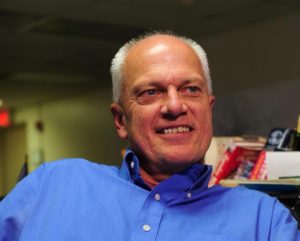
I want to stand with my friend and former Amarillo Globe-News colleague Jon Mark Beilue, who is demanding answers from the Amarillo Independent School District board of trustees.
The AISD board accepted the resignation of a highly valued girls volleyball coach who quit because of pressure she was getting from the mother of one of her athletes.
The coach, Kori Cooper Clements, lasted one season. The Amarillo High girls volleyball program is among the best in Texas history. What Clements has alleged is shameful interference by a parent.
The school board has remained silent. The school district’s constituents — the board’s “bosses” — deserve an explanation on what has been alleged.
What’s more, the chatter all over Amarillo implicates Renee McCown, an AISD board member, as the offending parent.
So, as Beilue has suggested, it is past time for the board to speak to the constituents. Explain its action or it inaction on this matter.
Here is what Beilue posted the other day on Facebook. Take a moment or two to read it. It’s worth your time.
***
So it’s been one week since the Amarillo ISD school board heard from an angry public at its regularly scheduled meeting, including two Amarillo High volleyball players among 10 there to support head coach Kori Clements, voted to accept Clements resignation, and then has publicly done what anyone who has been paying attention to this board expected.
Nothing.
No word of support for fellow board member Rene McCown who’s been twisting in the wind, no admonishment of allegations of her misuse of her school board position, no announcing they are looking into this troubling situation and will issue their findings as soon as possible.
Nothing.
It’s as if Amarillo voters elected a bunch of Marcel Marceaus, the famous French mime.
To recap quickly, promising young coach Kori Cooper-Clements resigned earlier this month in her first year with the storied program, and also her alma mater. She publicly accused a board member – read, McCown, who has two daughters on the team – of what appears to be greatly overstepping her bounds as a board member with regard to playing time for her daughters, and an administration who did not back the coach and played the political game of siding with the board member.
It has ignited a community firestorm that far exceeds the interest level of a high school volleyball program for the bigger picture of what appears to be a violation of the public trust of a board member, an administration that caved and a board that sits in stubborn silence.
There’s an old axiom in coaching when bad behavior, or lack of discipline on a team, occurs: “You’re either coaching it or allowing it to happen.”
Since I doubt the board is coaching it, let’s just vote for allowing it to happen. Board members can stiffen their backs all they want, but what conclusion should reasonable people reach when a board’s response seems to be just wishing it would go away?
At this moment, the entire public trust of the board from those who vote is about as low as it gets. If they disagree, they need to get out more.
This is not some run-of-the-mill parental interference of an athletic program that occurs frequently. This is not a parent who works at – oh, I don’t know – Owens-Corning who’s raising a stink. No, a board does not need nor should it get involved in those instances.
This is much different. This is one of your own who has allegedly inserted herself into the process almost from the moment Cooper-Clements was hired last March and attempted to use her position for personal gain that is not in the best interest of AISD.
That demands an internal investigation and public accountability to a public that put this board in that position in the first place. It demands transparency and getting on top of this instead of sticking their heads in the nearest Sod Poodle hole. To not do that is an insult to Amarillo and reeking of arrogance.
This goes beyond the tepid statement last week of a policy that “AISD does not comment on personnel matters out of confidentiality and respect for our employees.” This is a bigger matter than that, and the board knows it. Or should know it.
So as the board continues to play the public for a fool by remaining silent and invite even more questions, and the same public is left to wonder if board members can just play by their own rules, maybe the question is exactly that: Is the board coaching it or allowing it to happen?






